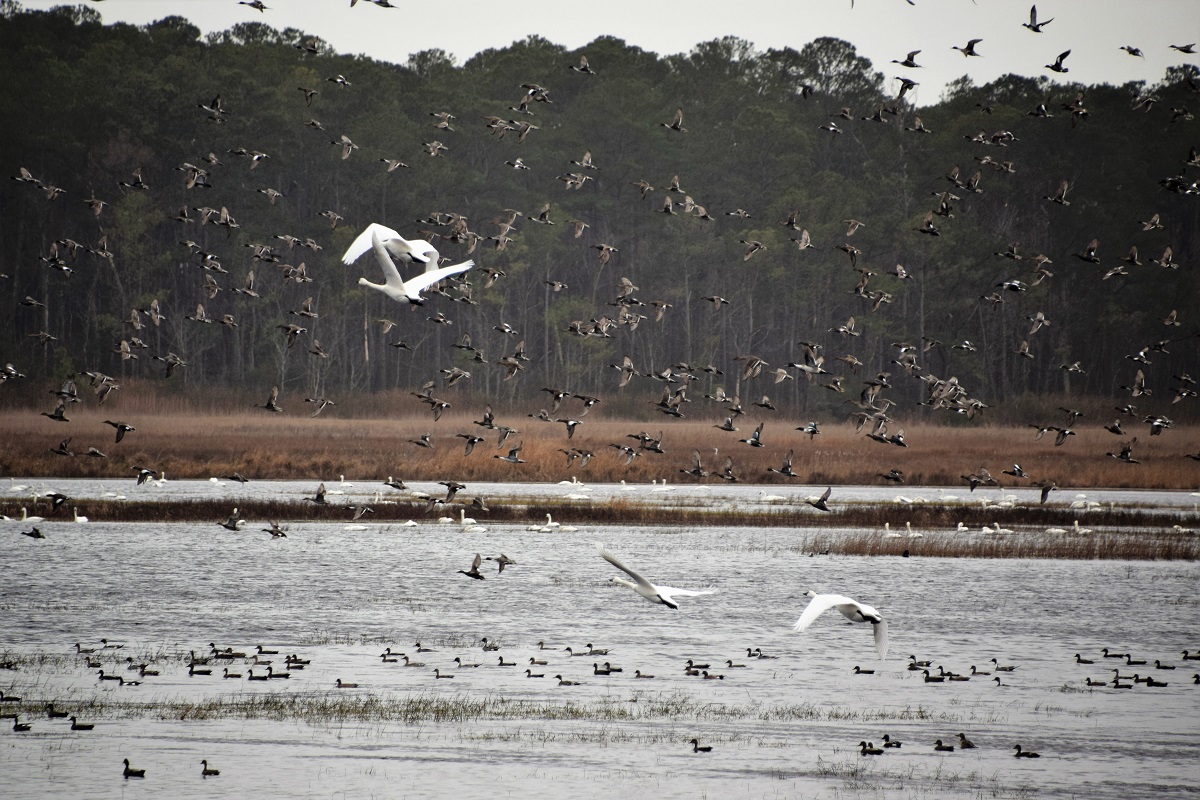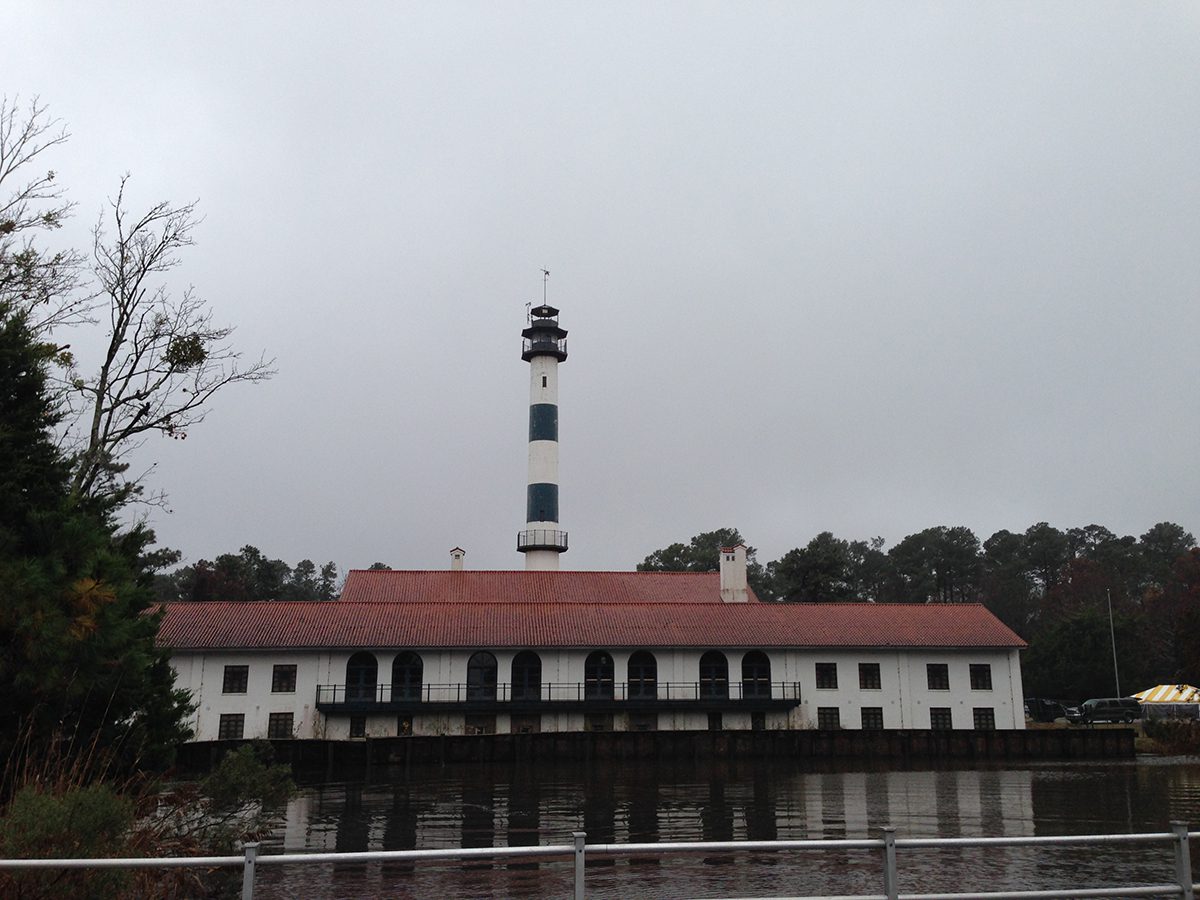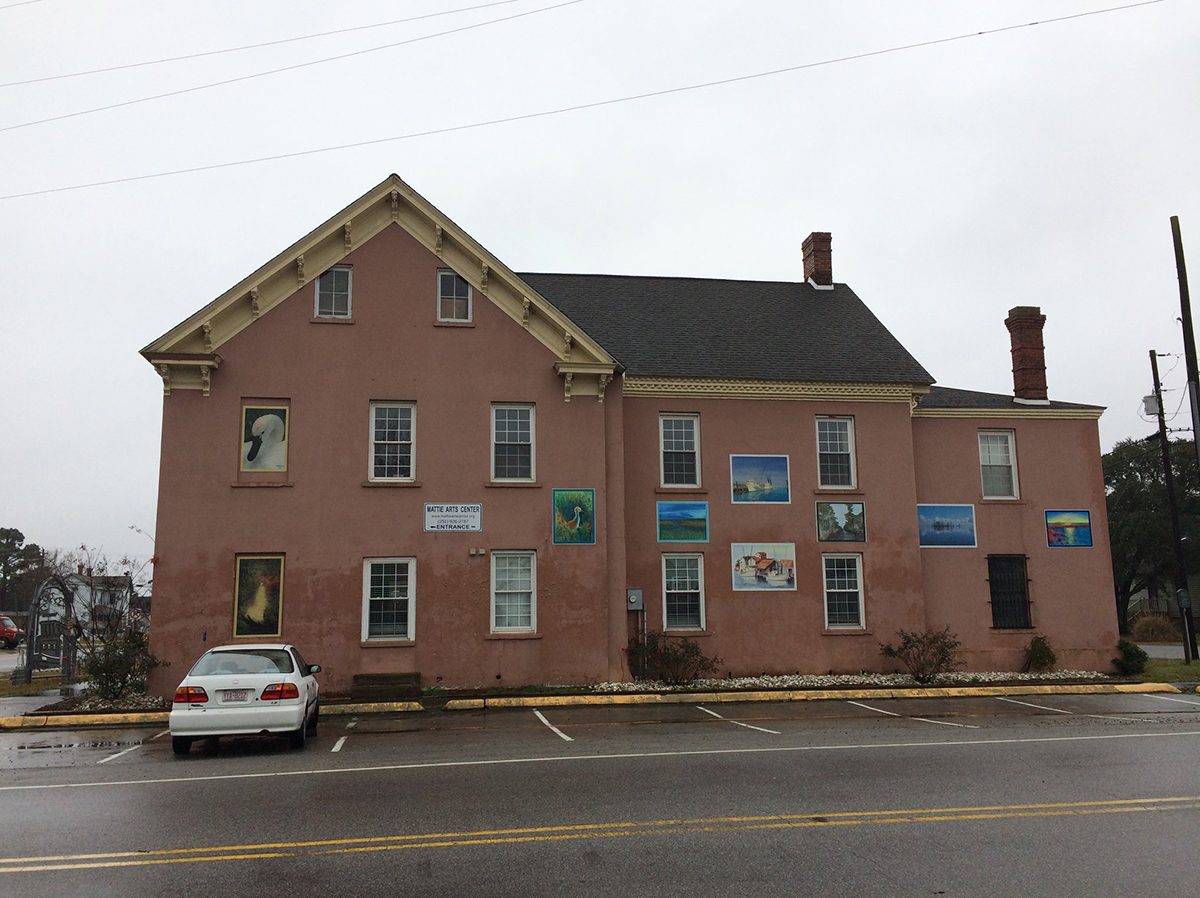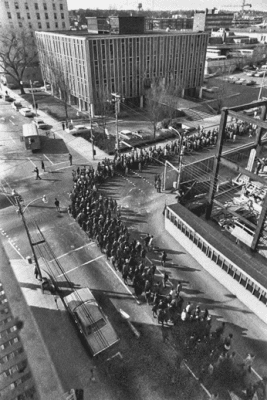
Part of a history series examining each of North Carolina’s 20 coastal counties.
Eastern North Carolina is a region dominated by agriculture, small towns, and miles of forests and swamps. One of the area’s oldest counties, Hyde County, also is one of its most wild and undisturbed.
Supporter Spotlight
The residents of Hyde County, both before and after European contact, took advantage of its natural resources and tried to use its swamps and rivers as efficiently as possible. But after centuries of trying to exploit this land, the current residents now see unspoiled nature as their greatest asset and many are trying to preserve it as much as they can.
Hyde County’s first settlement by the English occurred in the late 17th and early 18th centuries. After establishing the colony of North Carolina north of Albemarle Sound, colonists moved south. Some built farms and a town in what became Beaufort County, while others settled east of Bath Creek to the Pamlico Sound. This area had relatively poor soil and was the domain of numerous Native American groups. Many of these groups were defeated in the Tuscarora War and moved away.
The eventual namesake of Hyde County came from the period of the war. The county was formed in 1705 and first named Wickham Precinct after an estate in England. The name was changed to Hyde County in 1712 to honor Edward Hyde, the North Carolina governor who requested help from South Carolina to fight the Tuscarora.

Throughout its history, Hyde County has been dominated by the large body of water known as Lake Mattamuskeet. Mattamuskeet is the largest natural lake in the state. It was long believed to have been the result of a meteor strike, although scientists now suspect the lake was formed by a massive peat fire.
The area around Mattamuskeet was home to a number of Native American groups prior to English contact. The Mattamuskeet Native Americans, along with nearby Corees, were forced onto a reservation by the English in 1715 following the Tuscarora War. Numerous attempts to drain the lake and build canals have been made since the 18th century. These attempts have substantially decreased the lake’s size.
Supporter Spotlight
Outside of the area around Lake Mattamuskeet, the county grew slowly. It lost its prosperous western half in 1729 with the formation of Beaufort County and much of its Outer Banks territory in 1870 to Dare County, according to historian Daniel Leroy Corbitt.
The Hyde County Courthouse reflects this shift in focus. Court was first held in Bath before moving to Woodstock Point on the Pungo River. The courthouse at Woodstock Point, which burned in 1789, left ruins that can still be seen in the Pungo River, according to the North Carolina Gazetteer.
The court later moved 15 miles east to Swan Quarter, which remains unincorporated. Hyde County’s next courthouse was built soon after the move in the 1850s and was described by historian Catherine Bishir in “A Guide to the Historic Architecture of Eastern North Carolina” as a “compact, stuccoed, 2-story brick building” with light roof decorations.” The building is one of the oldest courthouses in the state.

The 19th century saw farmers try to extract as much wealth as they could from the swamps of Hyde County, with little success. The county profited from slavery, however, with 37.4% of its population enslaved in 1860, one of the lowest percentages in eastern North Carolina. Many of these slaves worked in either smaller farms or forestry. They took advantage of hardy swamp woods to produce shingles. Areas drained by canals were viable centers of agriculture, although farmers never succeeded in draining the area’s largest lakes. Shipping also brought in a modest income on the Outer Banks. Ocracoke was adjacent to Ocracoke Inlet, a major inlet for oceangoing ships until the mid-1800s when more efficient inlets opened up.
In the 20th century, the county continued to be defined by Lake Mattamuskeet and Ocracoke. Mattamuskeet became a center for hunting, fishing and wildlife viewing.
One reminder of the area’s history as a hunting destination is Mattamuskeet Lodge, located on the lake near the community of New Holland. Originally built as a pumping station in 1911, the building was renovated after 1934 following the federal government’s takeover of the Mattamuskeet area as a wildlife refuge. It is by far the tallest structure in the county and at one time could accommodate over 50 travelers, as noted in the building’s National Register nomination.

Twenty-five miles to the south of Mattamuskeet, Ocracoke Island attracts hundreds of thousands of tourists each year. They arrive by ferry to enjoy the island’s beaches, seafood restaurants, and historic 1823 lighthouse.

Outside of these two areas, the 20th century was mostly quiet for Hyde County. Its population decreased by almost half between 1900 and 2000.
The county’s main period of prominence occurred during the desegregation struggles of the 1960s. Between 1968 and 1969, African American residents protested the closure of two historically Black schools. They refused to send their children to any school, marched on Raleigh, and fought back against violent attempts to influence their actions.
According to historian David Cecelski, this battle ended up leading to a referendum and an extraordinary settlement with state officials in Raleigh that kept the schools open.
Today, Hyde County has embraced its natural heritage and status as a tourism center. It has the second-smallest population in the state with fewer residents than it had in 1800. There are few shops, restaurants, or businesses outside of the tourism industry in Ocracoke. But the county does have several visitor centers and areas for natural recreation. It has embraced its pristine beauty and remains a haven for nature lovers.







